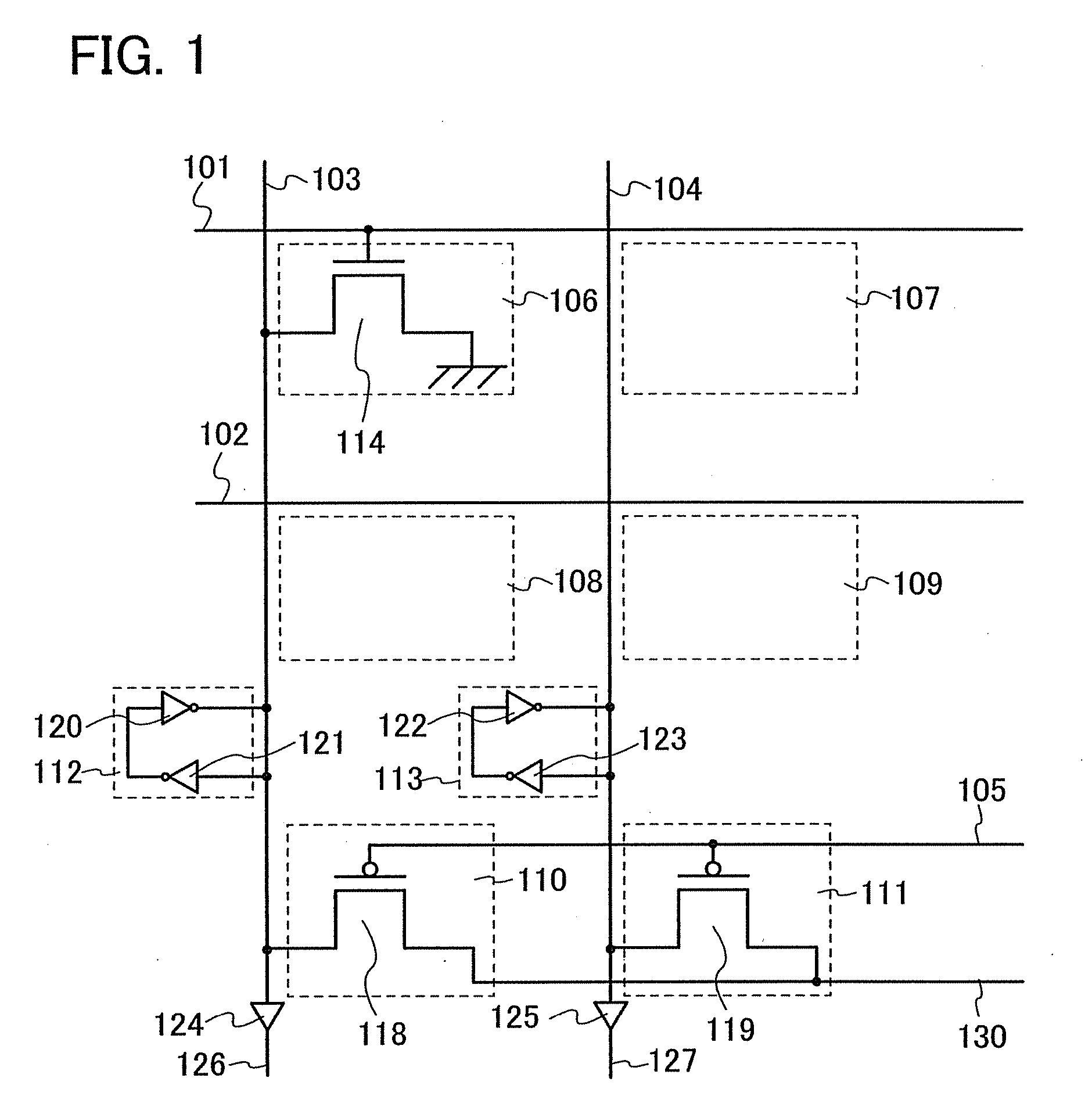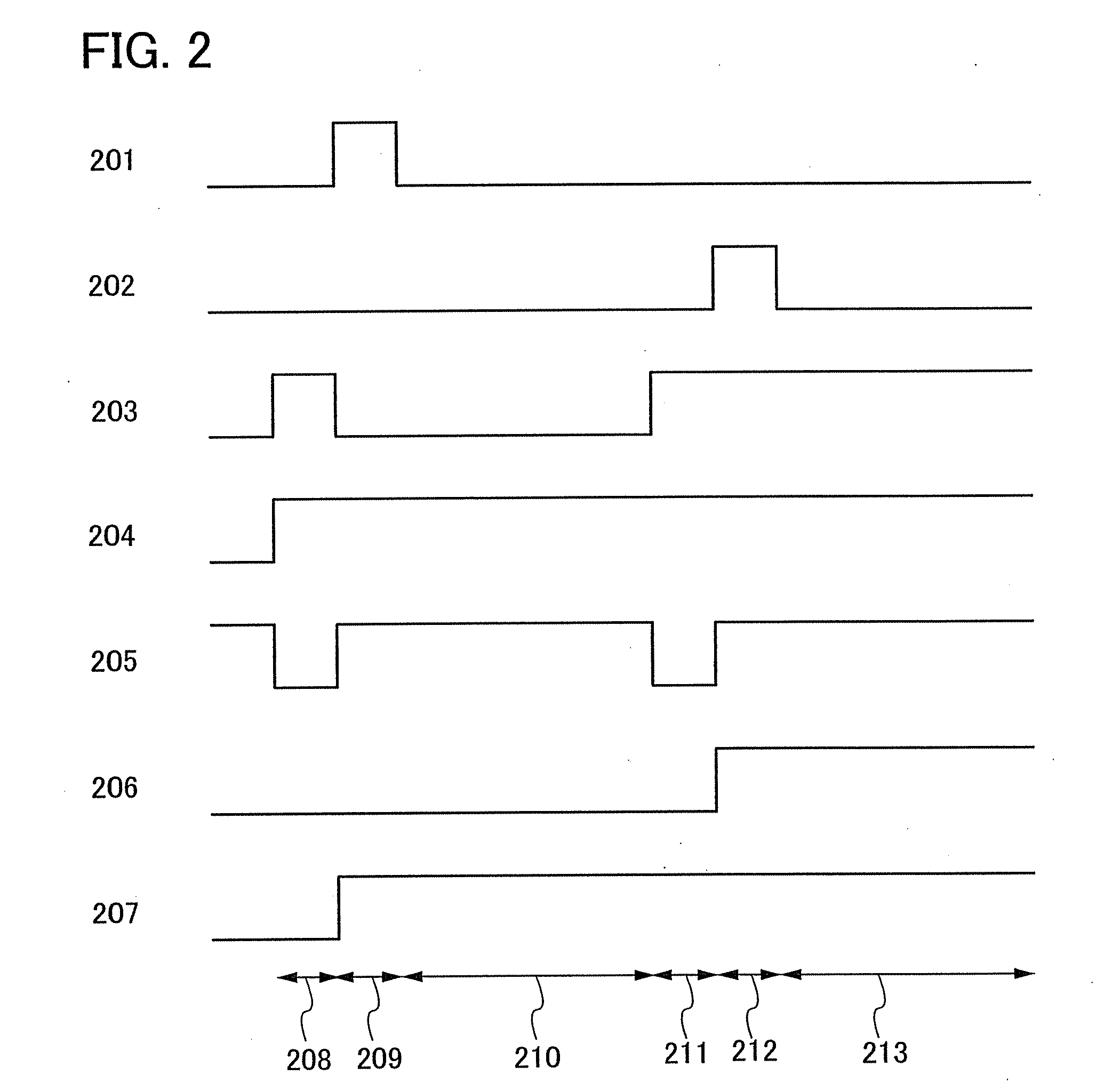Semiconductor Device
a semiconductor device and semiconductor technology, applied in semiconductor devices, digital storage, instruments, etc., can solve the problems of power consumption of memory accounts, and achieve the effect of suppressing heat generation and reducing power consumption of semiconductor devices according to the present invention
- Summary
- Abstract
- Description
- Claims
- Application Information
AI Technical Summary
Benefits of technology
Problems solved by technology
Method used
Image
Examples
embodiment mode 1
[0032]In Embodiment Mode 1, an explanation of a semiconductor device including a memory and a CPU will be given. FIG. 3 is a block diagram showing a configuration example of the semiconductor device including the memory and the CPU.
[0033]As is shown in FIG. 3, the semiconductor device includes a CPU 151, a main memory 152, an input / output interface 153, an address bus 156, a data bus 157, and a controller bus 158. The main memory 152 includes a ROM 154 and a RAM 155. The ROM 154 is used as a program memory which stores a program executed by the CPU 151. The RAM 155 serves as a working memory for executing a program by the CPU 151.
[0034]The CPU 151 and the main memory 152 are connected via the address bus 156. Furthermore, the CPU 151, the main memory 152, and the input / output interface 153 are connected to each other via the data bus 157 and the controller bus 158.
[0035]The CPU 151 controls operation of an apparatus, and data required for the CPU 151 to execute a program is stored i...
embodiment mode 2
[0078]As is described in Embodiment Mode 1, a memory circuit can be configured to minimize the power consumption by analyzing the data of a program required by the CPU in the CPU and the memory circuit storing a program (a program memory), which have a close relation with each other in a configuration of a semiconductor device.
[0079]In addition, even when the data of a program is not analyzed, the power consumption can be effectively reduced by changing the configuration of the memory according to data of NOP commands of the CPU. In Embodiment Mode 2, such an example will be described.
[0080]In Embodiment Mode 2, a plurality of memory cells storing a NOP command are composed of vacant cells in a memory circuit. For example, if a NOP command consists of “high” data (or “1”) only, the memory circuit as shown in FIG. 1 (the ROM 154) can be used for a program memory. In the configuration example shown in FIG. 1, the data of the NOP command is stored in the memory cells (108 and 109) whic...
embodiment mode 3
[0085]In Embodiment Mode 3, an example of a memory circuit provided with memory cells in place of vacant cells will be described. The memory cells have functions similar to the vacant cells. To be more specific, a semiconductor element, e.g. a transistor, is provided in a memory cell so that the memory cell can function in the similar way to a vacant cell, and the semiconductor element is not electrically connected to a word line. A memory cell including a semiconductor element which is not electrically connected to a word line as described above will be referred to as an “open cell”.
[0086]Hereinafter, a configuration example of a memory circuit according to Embodiment Mode 3 will be described with reference to FIG. 6. In Embodiment Mode 3, a configuration example is shown where “high” is a majority in the data stored in a memory circuit. The memory circuit shown in FIG. 6 has the same data array as that shown in FIG. 1, and the same reference numerals in FIGS. 1 and 6 indicate the ...
PUM
 Login to View More
Login to View More Abstract
Description
Claims
Application Information
 Login to View More
Login to View More - R&D
- Intellectual Property
- Life Sciences
- Materials
- Tech Scout
- Unparalleled Data Quality
- Higher Quality Content
- 60% Fewer Hallucinations
Browse by: Latest US Patents, China's latest patents, Technical Efficacy Thesaurus, Application Domain, Technology Topic, Popular Technical Reports.
© 2025 PatSnap. All rights reserved.Legal|Privacy policy|Modern Slavery Act Transparency Statement|Sitemap|About US| Contact US: help@patsnap.com



